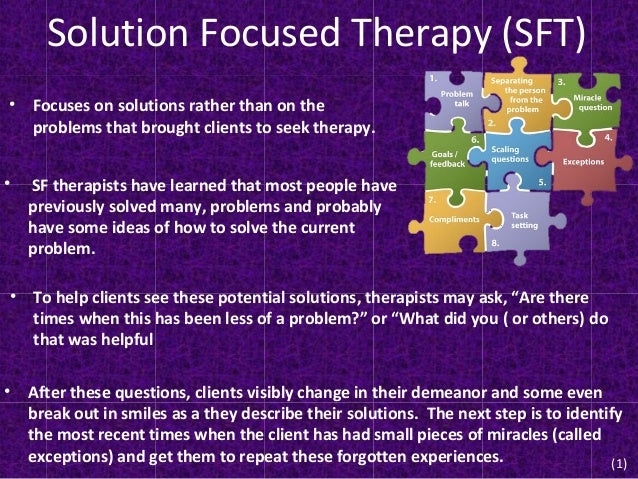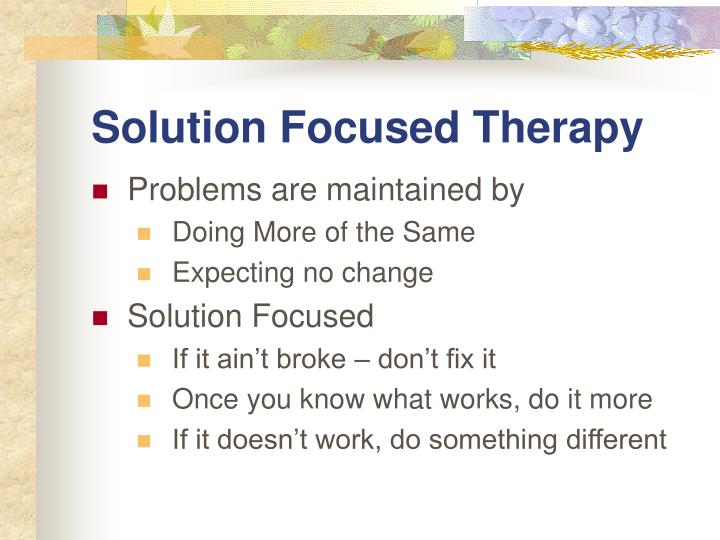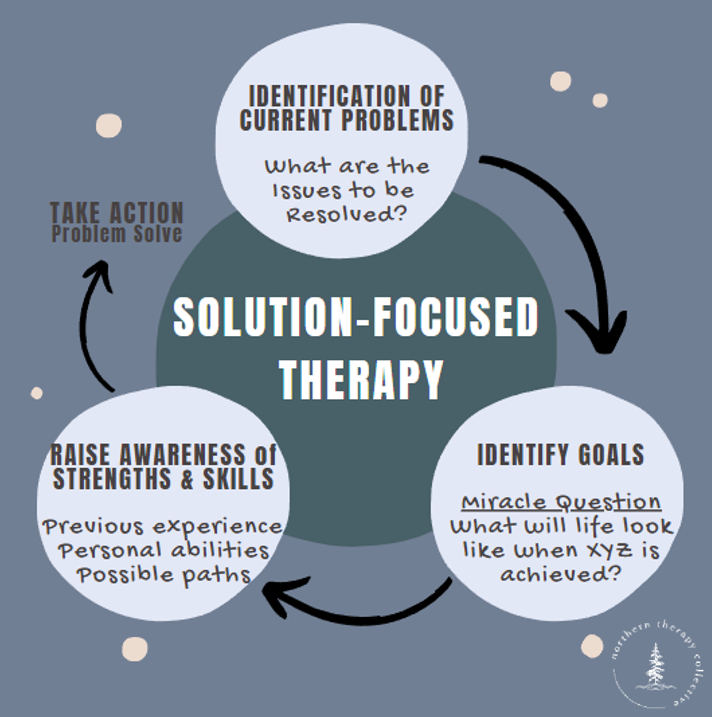Solution Focused Therapy Was Adapted From

Solution Focused Therapy (SFT), a widely utilized approach in mental health and social work, is often recognized for its emphasis on future solutions rather than dwelling on past problems. However, understanding the intellectual lineage of SFT reveals a fascinating adaptation and evolution of ideas from various therapeutic traditions and philosophical perspectives.
This article delves into the origins of SFT, tracing its roots back to the Mental Research Institute (MRI) in Palo Alto, California, and highlighting the crucial role of its founders, Steve de Shazer and Insoo Kim Berg.
The Roots at the Mental Research Institute
The MRI, during the mid-20th century, served as a hotbed for innovative therapeutic thinking.
Researchers and therapists at the MRI were deeply involved in studying communication patterns and their impact on family dynamics, particularly within the context of schizophrenia.
Key figures like Gregory Bateson, Don Jackson, and John Weakland significantly influenced the development of what became known as brief therapy approaches.
It's important to note that SFT did not emerge in a vacuum.
It was adapted and evolved from other modalities.
De Shazer and Berg, while working at the MRI, were exposed to these systemic approaches that emphasized understanding problems within a relational context rather than solely focusing on individual pathology.
Brief Therapy and Systemic Thinking
The MRI's focus on brief therapy was a crucial precursor to SFT.
Brief therapy, as the name suggests, aimed to achieve therapeutic goals in a relatively short timeframe, often within a few sessions.
This emphasis on efficiency and practicality would later become a hallmark of SFT.
Systemic thinking, another foundational element, viewed problems as arising from interactional patterns within systems, such as families or organizations.
Rather than attributing problems to individual shortcomings, systemic therapists examined how communication loops and relationship dynamics contributed to the maintenance of the problem.
These patterns become the focus of intervention.
“One of the key ideas was to shift the focus from the problem to the client’s strengths and resources,” explains Dr. Linda Metcalf, a leading expert in SFT and author of several books on the subject.
De Shazer and Berg: The Architects of SFT
Steve de Shazer and Insoo Kim Berg, building upon the foundation laid by the MRI, began to develop their own unique approach to therapy in the late 1970s and early 1980s.
They identified specific elements they believed were most effective in facilitating change.
This work occurred at the Brief Family Therapy Center (BFTC) in Milwaukee, Wisconsin.
Central to their approach was the notion that clients already possess the resources and strengths necessary to solve their problems.
The therapist's role, therefore, was not to provide solutions but to help clients identify and amplify these existing resources.
This perspective was a significant departure from more traditional, problem-focused therapies.
De Shazer and Berg developed specific techniques, such as the miracle question and scaling questions, to elicit clients' visions of their preferred future and track their progress toward achieving it.
Key Principles of Solution Focused Therapy
Several core principles underpin SFT.
One is focusing on solutions rather than problems.
Another is the belief that change is constant and inevitable.
SFT therapists also emphasize the importance of identifying exceptions to the problem – times when the problem is less severe or absent altogether.
By exploring these exceptions, clients can gain valuable insights into what works and how to replicate those successful strategies.
Furthermore, a collaborative and respectful relationship between the therapist and client is viewed as essential.
Impact and Implications
SFT has gained widespread popularity across various settings, including mental health clinics, schools, and social service agencies.
Its brief and practical nature makes it appealing to both therapists and clients.
It is particularly well-suited for working with diverse populations and addressing a wide range of problems, from depression and anxiety to relationship issues and behavioral challenges.
The impact of SFT extends beyond individual therapy.
Its principles have been adapted for use in coaching, organizational development, and conflict resolution.
The emphasis on identifying strengths and fostering collaboration has proven valuable in promoting positive change in various contexts.
Despite its popularity, SFT is not without its critics.
Some argue that it may oversimplify complex problems and that its focus on the future can neglect important historical or contextual factors.
However, proponents of SFT maintain that its effectiveness lies in its ability to empower clients to take control of their lives and create positive change.
Understanding that Solution Focused Therapy was adapted from the Mental Research Institute allows to broaden the approach, creating a more versatile intervention.
By tracing the origins of SFT and understanding the intellectual influences that shaped its development, practitioners can gain a deeper appreciation for its underlying principles and enhance their ability to effectively utilize this powerful therapeutic approach.
De Shazer and Berg’s work continues to evolve and inspire therapists and change agents around the world.


















